|
95. Aglais io (Linnaeus, 1758) / Peacock / Nymphalidae – Nymphalinae
NL: dagpauwoog / D: Tagpfauenauge / F: paon-du-jour
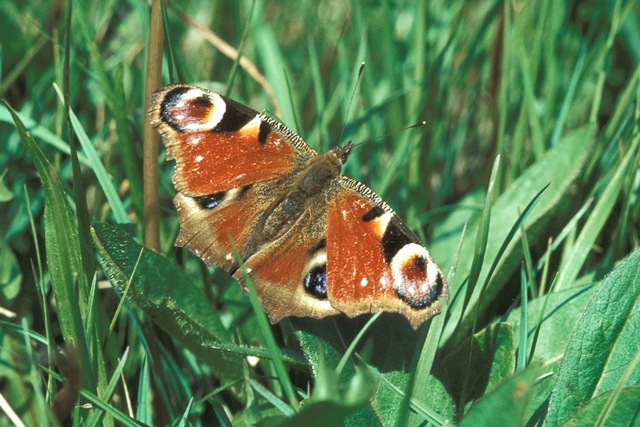  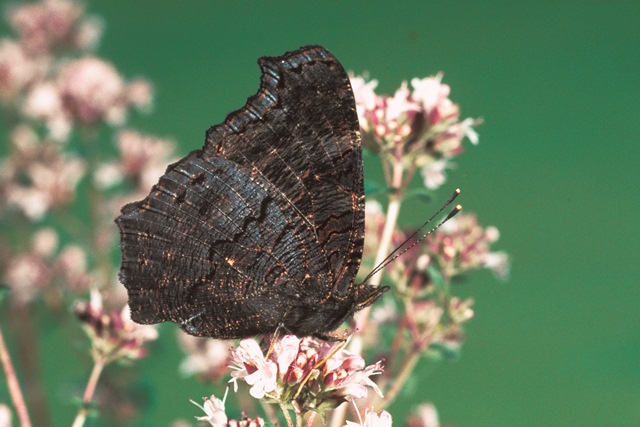
Photographs: Frits Bink ©.
Medium-sized or large, wing length 28 (24-31) mm. The species is observed in all countries of the Benelux where, in gardens, the butterflies are sometimes common in August. However the larvae are only present in woodland, copses and in the countryside.
Butterfly is on the wing from early-April until early October and the overwintered adults peak end-April and the summer offspring late-July and in Flanders late-September.
The species is known from maritime and continental climates, amplitude 4 to 17. Required heat sum 500°d and maximum tolerated 2000°d, corresponding climate windows 21 and 38 weeks.
The appearance of the butterflies is sometimes very unpredictable because a large proportion of the adults will aestivate if weather conditions are unfavourable. The species is in many aspects similar to Aglais urticae but, because of their differences in required warmth, their yearly fluctuations are not synchronized.
Ecological characteristics
Behaviour over time
Overwintering: adult, hidden in hollow trunk, cave, stable or unheated house.
Reproduction: oviposition starts when the body contains about 300 eggs, estimated potential production 2 or 2.5 times as much.
Larval feeding periods: three or four weeks in period early-June until mid-September.
Generations: one, often followed by a partial second one.
Spreading of risk: flexibility in adult diapause.
Life cycle: egg 7 (5-14) days; larva 24 (15-30) days; pupa 12 (10-16) days.
Life span of adult: in summer generation 6-8 weeks, in overwintering generation 35-45 weeks.
  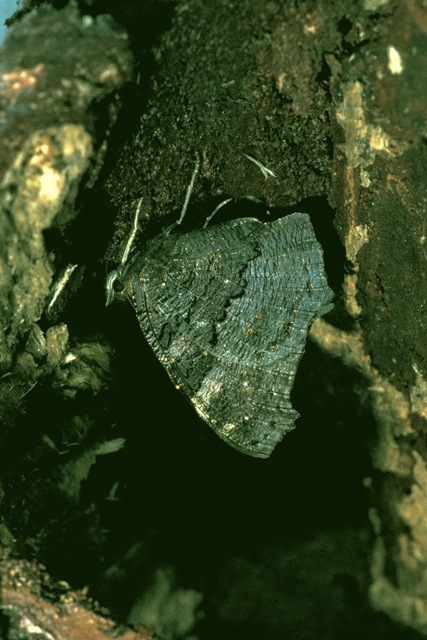
Photographs: Frits Bink, Rosita Moenen, Frits Bink ©.
Behaviour in space
From stay-at-home to migrant: nomad, spatial requirement considerable.
Finding a mate: male perches and patrols alternately.
Orientation in the landscape: edges in woodland and copse, prefers humid sites.
Oviposition: big clutch of about 200-300 eggs in underside of a leaf, often followed by a smaller clutch later on.
Defence
Threats from other organisms: larva is armoured by large spines and warning colour of white spotted black and red prolegs.
Threats from the environment: larva and adult are sensitive to drought.
Feeding habits
Adult: nectar of all kind of flowers, in the autumn the flowers of ivy.
Larva: lives gregarious in a silk web, in last instar individually.
Larval foodplants
Plant species: Urticaceae, Urtica dioica.
Journal
Rearing experiment based on specimen from Meeuwenkampje, Veenendaal, Netherlands:
9 June 1984: collected freshly laid batch of eggs.
30 July: larvae last instar.
2 August: first larva pupated.
15 August: all pupae hatched.
Table 95-1. Results of dissections

Table 95-2. Collection and observation localities
EST, Pööravere, 58° 40’ 25”N – 24° 36’ 50”E; 16-7-1999.
F, Vosges, Grand Ballon, 1424 m, 47° 54’ 04”N – 7° 05’ 54”E; 26 July 1983 (migrating butterfly).
F, Vosges, le Steinberg, 1150 m, 47° 59’ 27”N – 7° 06’ 40”E; 21 August 1984.
NL, Amerongen, garden 52° 00’ 01”N – 5° 27’ 34”E;1975-1986.
NL, Bennekom, garden 51° 59’ 30”N – 5° 40’ 34”E; 1988-2014.
NL, Leersum, garden 52° 00’ 29”N – 5° 24’ 04”E; 1975-1986.
NL, Grebbeberg, 51° 57’ 09”N – 5° 36’ 23”E; 5 June 1981, 8 August 1983.
NL, Hoge Veluwe, 52° 04’ 40”N – 5° 49’ 21”E; 27 July 2000.
NL, Meeuwenkampje, 52° 02’ 57”N – 5° 32’ 53”E; 9 June 1984 (oviposition observed).
Fig. 95-1. Aglais io, phenogram adapted from Fichefet et al. 2008: 217.
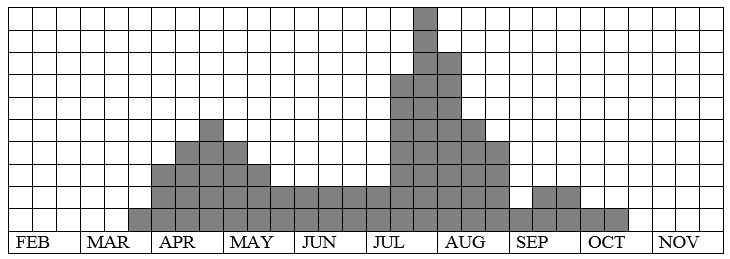
Fig. 95-2. Aglais io, habitat characteristics.
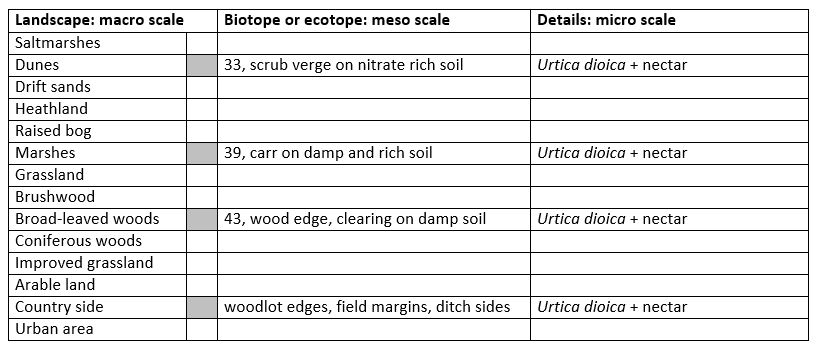
Fig. 95-3. Aglais io, climate matrix, heat-sums 500 - 2000°d.
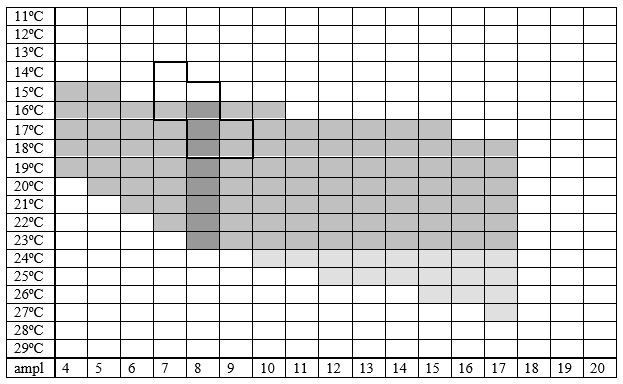
|











